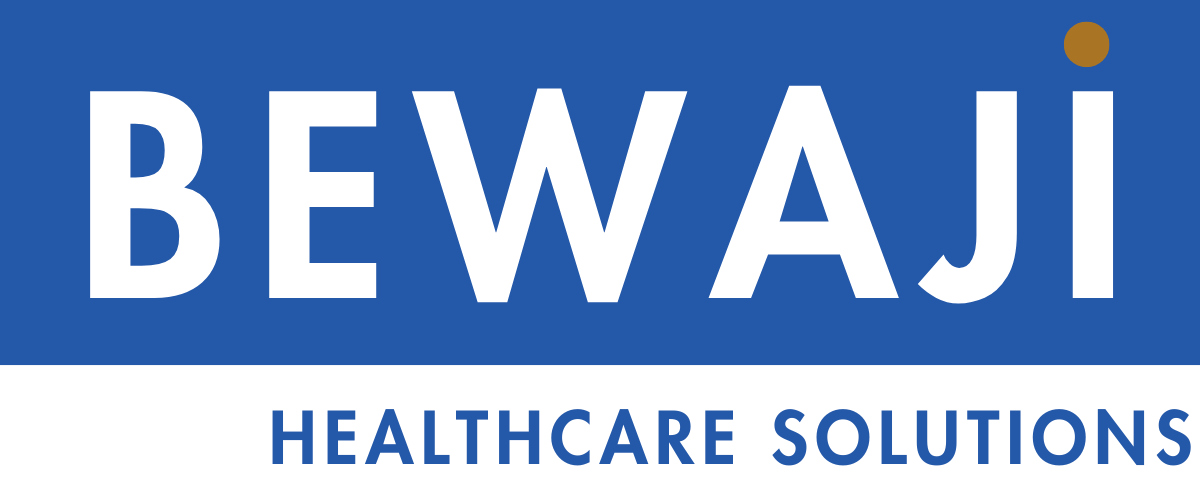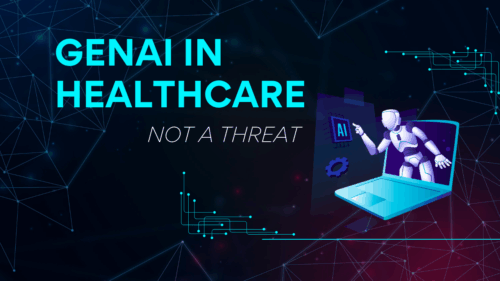Maximizing ROI in Healthcare Technology Investments: Common Pitfalls and Strategic Solutions
Maximizing ROI in healthcare technology investments is critical for healthcare executives and decision-makers. However, this task is fraught with challenges that can derail the anticipated benefits. To ensure that your organization successfully navigates these challenges, it is crucial to understand the common pitfalls associated with healthcare technology investments and implement strategic solutions that enhance the return on these investments.
Common Pitfalls in Healthcare Technology Investments
Poor Implementation and Integration
One of the most significant barriers to achieving ROI in healthcare technology is the ineffective implementation and integration of new systems. Too often, healthcare organizations rush to deploy technology without considering how it will align with existing workflows and infrastructure. This lack of integration can create data silos, diminish productivity, and lead to frustration among staff. Healthcare leaders must prioritize seamless integration, ensuring that new technologies are compatible with existing systems and contribute to healthcare process optimization.
Lack of User Adoption
For any technology investment to succeed, its end-users must embrace it. However, inadequate training, support, and communication can lead to poor adoption rates. Suppose the technology is perceived as overly complex or irrelevant to daily tasks. It will likely be underutilized in that case, diminishing the anticipated ROI. Therefore, a robust change management strategy and comprehensive training programs are essential to foster user adoption and maximize the technology’s impact.
Inadequate Planning and Strategy
Investing in technology without a clear and aligned strategy is a common error. Many organizations fail to integrate their technology investments with broader strategic objectives, making measuring success or achieving the desired outcomes difficult. A well-articulated technology investment strategy that aligns with the organization’s goals is critical. This strategy should include specific metrics for success and a roadmap for technology implementation that supports strategic healthcare services.
Underestimating Costs
The total cost of ownership (TCO) in healthcare technology often extends far beyond the initial purchase price. Ongoing expenses such as maintenance, upgrades, training, and support can significantly erode ROI if not accurately accounted for. A thorough TCO analysis is crucial to ensure that all potential costs are anticipated and budgeted for, thus safeguarding the viability of the investment.
Overemphasis on Technology Over Processes
While technology is a powerful tool, it is not a cure-all for organizational inefficiencies. An overreliance on technology without addressing underlying process issues can result in disappointing outcomes. Healthcare leaders must adopt a holistic approach, integrating technology with process improvement initiatives. This approach should focus on healthcare process improvement to ensure that the technology is applied to a solid operational foundation.
Regulatory and Compliance Challenges
Healthcare technology investments must comply with many regulations, such as HIPAA, in the United States. Failing to account for these regulatory requirements can lead to costly delays, increased expenses, and even penalties, negatively impacting ROI. Therefore, regulatory considerations must be integrated into the technology planning and implementation process from the very beginning.
Failure to Measure Outcomes
Without effective outcome measurement mechanisms, it is challenging to determine whether a technology investment is delivering the expected benefits. Many organizations lack the necessary metrics and processes to evaluate the impact of their technology investments. Implementing robust technology outcome measurement systems is essential to assess the performance and justify the investment.
Vendor Selection Issues
Choosing the wrong vendor or technology solution can have dire consequences. Some organizations may select a solution based on cost or vendor promises without thoroughly evaluating whether the technology meets their needs. A poor match between the technology and the organization’s requirements can lead to failed implementations and no ROI. Rigorous due diligence during the healthcare vendor selection process is essential to ensure a successful technology integration.
Security Concerns
With the rising incidence of cyber threats, investing in secure technology solutions is non-negotiable. A security breach can result in significant financial losses and damage to the organization’s reputation, nullifying any ROI. Therefore, organizations must implement robust healthcare security measures as part of their technology investment strategy.
Economic and Market Factors
External factors, such as economic downturns or shifts in the healthcare market, can affect the ROI of technology investments. For example, changes in reimbursement models or patient volumes can alter the financial returns of new technologies. Healthcare organizations must remain agile and adjust their technology strategies to accommodate these external variables.
Strategic Solutions for Maximizing ROI
Comprehensive Planning and Strategy Alignment
Aligning technology investments with broader organizational goals is essential to maximizing ROI. This requires comprehensive healthcare technology planning with clear objectives, measurable goals, and evaluation criteria. Leaders can achieve more tangible results by ensuring technology investments support the organization’s mission.
Robust Integration Planning
Effective technology integration is critical to avoiding disruptions and achieving expected outcomes. A detailed integration plan involving IT and operational teams from the outset can help proactively identify and address potential challenges. This ensures that new systems work harmoniously with existing infrastructure, facilitating effective technology integration.
Focus on Change Management and User Training
Healthcare technology adoption depends significantly on user acceptance and competency. Therefore, a strong focus on change management, including tailored training programs and continuous support, is essential. Engaging staff early and addressing their concerns can increase buy-in and improve the overall success of the technology deployment.
Total Cost of Ownership Analysis
A comprehensive TCO analysis is vital for accurately forecasting the ongoing costs associated with healthcare technology investments. By accounting for maintenance, upgrades, and other long-term expenses, organizations can create more reliable budgets and avoid financial surprises, ensuring the investment remains sustainable.
Process Optimization Before Technology Implementation
Before deploying new technologies, healthcare leaders should focus on optimizing existing processes. This ensures that the technology enhances, rather than hinders, operational efficiency. Lean methodologies, Six Sigma, or other process improvement frameworks can be instrumental in this preparatory phase.
Vendor Due Diligence
A thorough vendor evaluation is crucial for selecting a technology solution that aligns with the organization’s needs. This involves assessing the technology’s capabilities, the vendor’s track record and support services. Flexible solutions that can be customized to the organization’s requirements often yield the best results.
Implementing Strong Security Measures
Given the sensitivity of healthcare data, implementing robust security measures is essential. This includes selecting technologies with advanced encryption, regular updates, and compliance with healthcare regulations. Comprehensive cybersecurity training for staff further mitigates risks and protects patient data.
Continuous Monitoring and Outcome Measurement
To ensure that technology investments deliver the expected benefits, healthcare organizations must implement continuous monitoring and evaluation processes. This involves setting clear metrics for success and regularly reviewing performance data. Ongoing audits and feedback loops can help refine strategies and maintain alignment with ROI goals.
Flexibility and Agility in Response to Market Changes
Healthcare organizations must remain adaptable to economic and market fluctuations. This flexibility allows for adjustments in technology strategies, ensuring that investments align with evolving market conditions and organizational priorities.
Maximizing ROI in healthcare technology investments requires a nuanced approach beyond mere acquisition. By recognizing and addressing common pitfalls—such as poor implementation, lack of user adoption, and inadequate planning—healthcare organizations can turn potential challenges into opportunities for growth and efficiency. Strategic solutions like comprehensive planning, robust integration, and continuous outcome measurement ensure that technology investments align with broader organizational goals and deliver tangible results.
Healthcare leaders must adopt a proactive and holistic approach to their technology investments. This includes focusing not only on the technology itself but also on the processes, people, and strategies that will ultimately determine the success of these investments.
By integrating these best practices into your technology investment strategy, you can effectively navigate the complexities of healthcare IT, optimize your resources, and achieve sustainable improvements that enhance patient care and organizational performance. Ultimately, the key to maximizing ROI in healthcare technology lies in a balanced approach that harmonizes innovation with practicality, ensuring that every investment contributes meaningfully to your organization’s mission and long-term success.
Maximize Your Healthcare Technology ROI Today!
As a healthcare leader, your focus is on improving patient outcomes, operational efficiency, and ensuring compliance with industry standards. With technology investments playing a pivotal role in achieving these goals, it’s critical to avoid common pitfalls and implement solutions that align with your organization’s mission.
We specialize in helping healthcare organizations like yours navigate complex technology landscapes, ensuring seamless integration, user adoption, and regulatory compliance. By partnering with us, you will optimize your technology investments and unlock their full potential to drive efficiency and enhance patient care.
Contact us today to schedule a consultation tailored to your unique needs. Together, we’ll create a roadmap that ensures sustainable ROI from your healthcare technology investments. Don’t wait—let’s transform your organization’s tech strategy for long-term success!
Click here to schedule a consultation.



